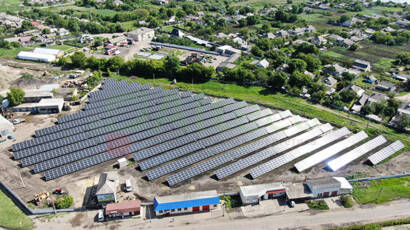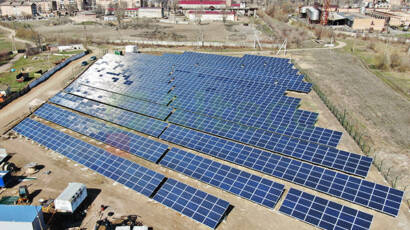 The Covid-19 pandemic and resulting economic fallout have had a variety of impacts on the clean energy transition, with some sectors being more affected than others. Earlier this year, the International Energy Agency (IEA) warned of slowed progress towards sustainable energy goals due to Covid-19 and reversed progress in many areas crucial in reaching net zero, such as energy efficiency, clean cooking, or access to electricity. There is one sector, however, that has shown remarkable resilience since the beginning of the pandemic and has been able to maintain, and even accelerate, its rapid growth since 2020: green energy infrastructure.
The Covid-19 pandemic and resulting economic fallout have had a variety of impacts on the clean energy transition, with some sectors being more affected than others. Earlier this year, the International Energy Agency (IEA) warned of slowed progress towards sustainable energy goals due to Covid-19 and reversed progress in many areas crucial in reaching net zero, such as energy efficiency, clean cooking, or access to electricity. There is one sector, however, that has shown remarkable resilience since the beginning of the pandemic and has been able to maintain, and even accelerate, its rapid growth since 2020: green energy infrastructure.
That is not to say the sector has been immune to the challenging environment of the last two and a half years. With global value chains severely disrupted by Covid-19 lockdowns and geopolitical frictions, many renewable energy projects have seen significant delays in installations.
Orders of new solar panels or battery systems for grid-scale applications can now take anywhere between a couple of months to a staggering two years. More than 315 projects in the US, for example, are being canceled or delayed in 2022 due to supply chain constraints, according to Washington D.C.-based trade group Solar Energy Industries Association.
NextEra, one of America’s largest green infrastructure developers and capital investors, recently announced that approximately 2.1 to 2.8 GW of its solar and storage projects will need to be shifted from 2022 to 2023.
At the same time, renewable energy developers are grappling with surging metal prices. The price of polysilicon, a key material in the solar photovoltaic value chain, has grown a record 300% since January 2020.
Delivery delays and price spikes have highlighted the need for more diversified supply chains but they have also failed to undermine the green infrastructure boom. On the contrary, renewable energy capacity additions reached a record high last year, with approximately 270 GW of renewables becoming operational globally in 2021.
The trend is expected to continue in 2022 with renewable energy capacity additions forecast to grow by another 8%, with solar to account for approximately 60% of new installations. Similar trends can be seen in the job market, with US renewable energy jobs growing in 2021 after a decline in 2020 due to the Covid-19 pandemic.
This clean energy buildout comes on the back of increased M&A activity in the sector and significant private capital inflows. Global sustainable funds reached an all-time high of $3.9 trillion in Q3 2021, doubling in just 12 months.
In 2021, US battery storage, smart grid, and energy efficiency start-ups attracted a record $10.1 billion in venture funding, a stark increase from $2.6 billion in 2020.
In 2022, global clean energy investments are expected to top $2.4 trillion, well above pre-Covid levels. Investors’ appetite for renewable energy projects seems to show no signs of waning.
Source: PV magazine



